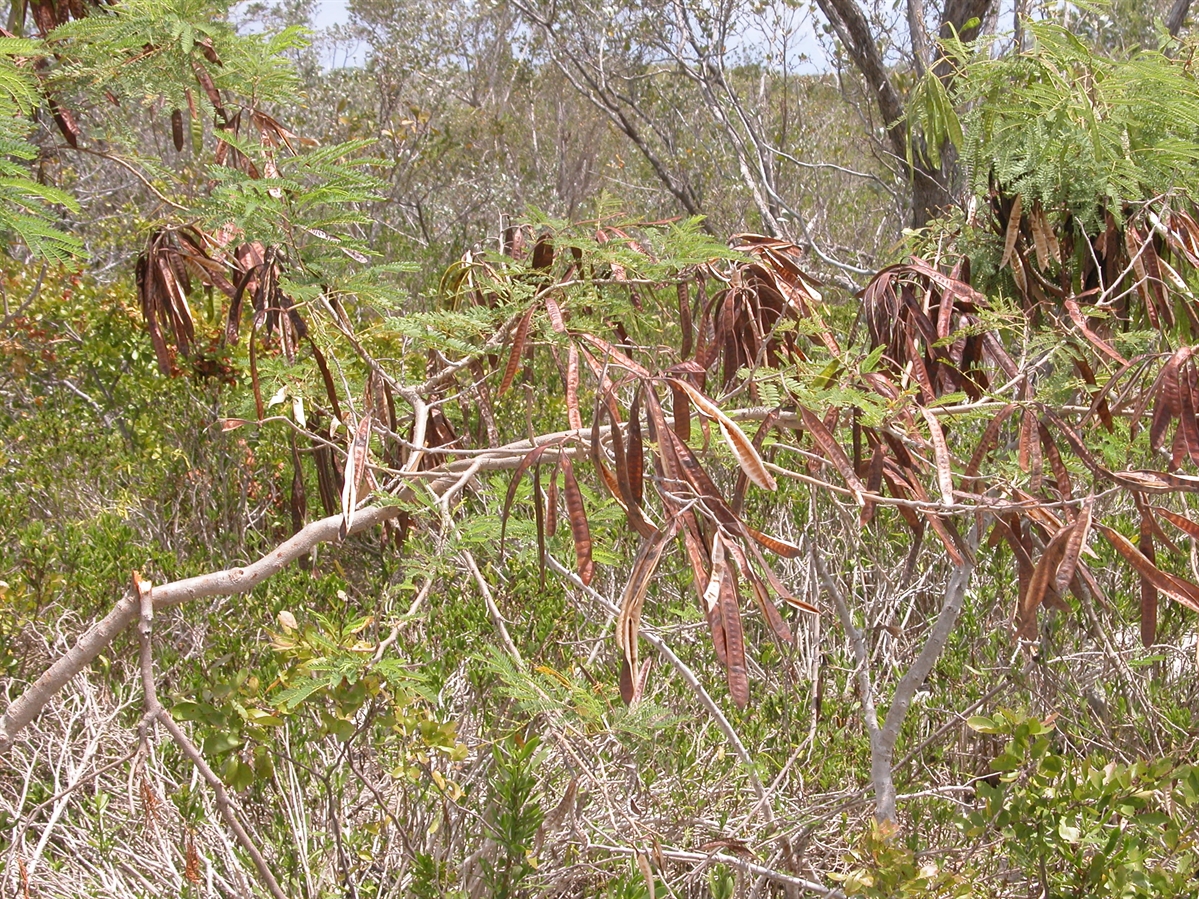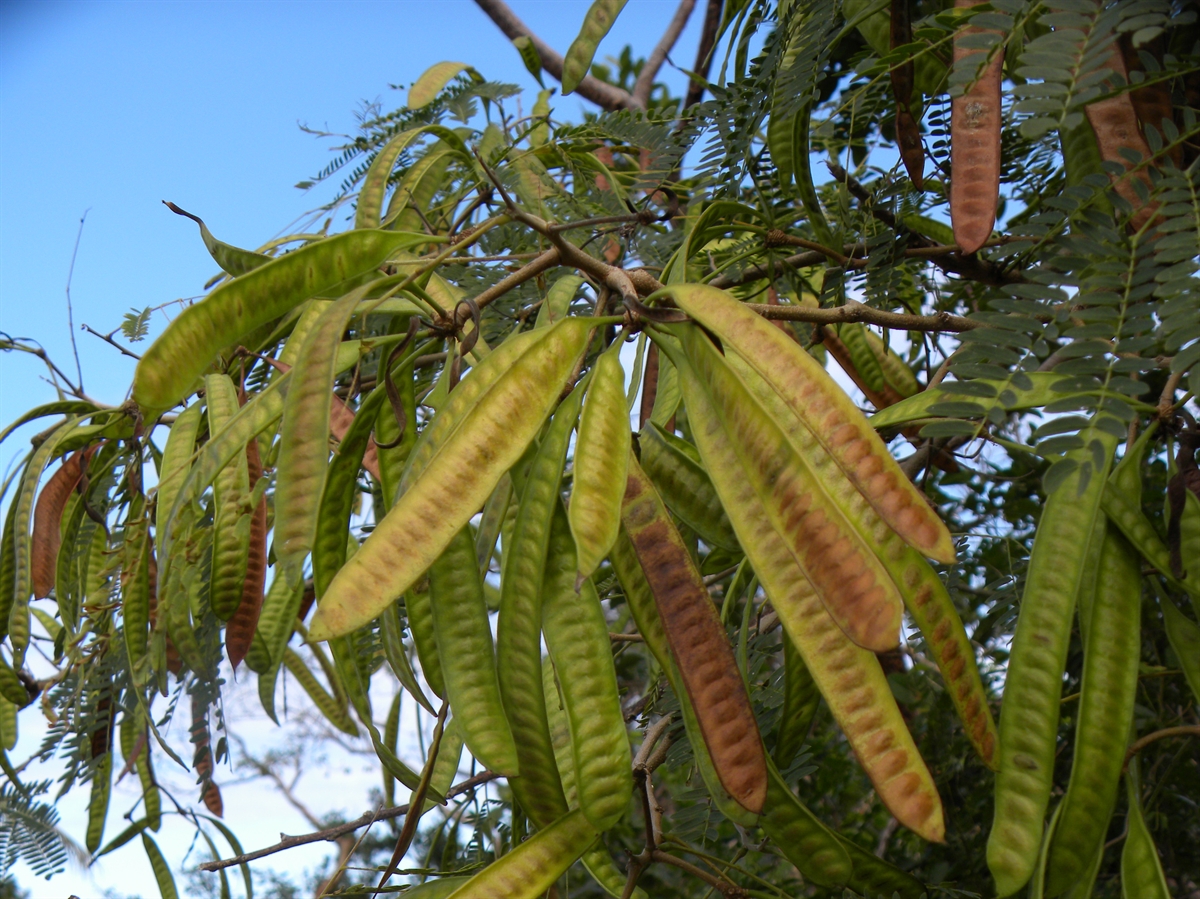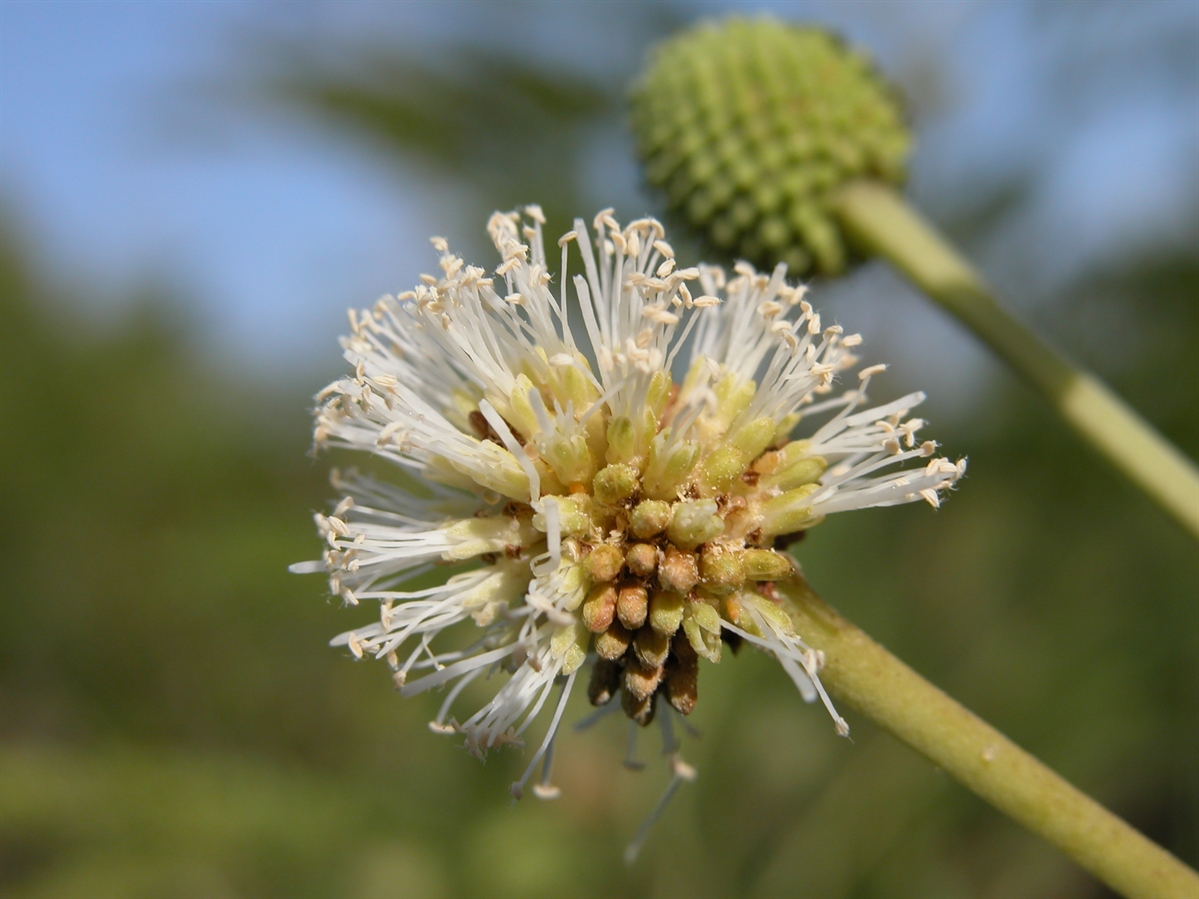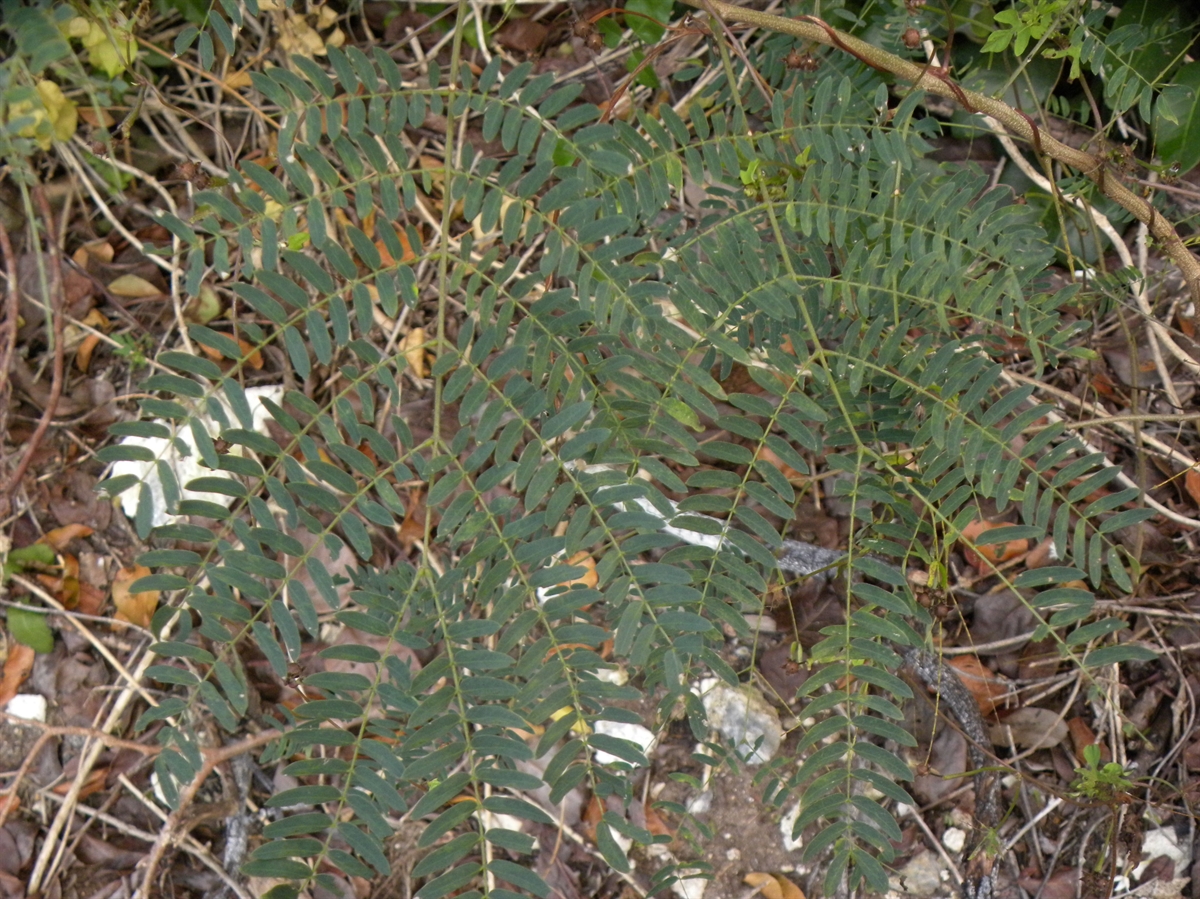Habit: Leucaena leucocephala grows as a shrub to medium size tree up to 10 meters in height. The evenly, bipinnately compound leaves are arranged alternately and to 10 cm in length. The leaflets are in 11-17 pairs, oblong with an acute leaf apex and entire margin. Between the lower-most pinnae there may be a small circular depressed gland. The base of the petiole and leaflets are swollen.
The complete, perfect, actinomorphic flowers are arranged in heads. The calyx has 4 fused green sepals forming a short tube. The corolla has 5 unfused green petals. There are 10 white stamens 5 times the length of the corolla. The ovary is superior and has a single locule. The fruit is a brown legume at maturity.
Habitat: Leucaena leucocephala grows in Human Altered environments such as roadsides, abandoned fields as well as the edges of Dry Broadleaf Evergreen Formations (coppice).
Distribution: Leucaena leucocephala Is NOT native the Lucayan Archipelago but occurs on all island groupings within as well as Florida, the Caribbean region and tropical and subtropical regions of the world. It is native to southern Mexico and Central America.
Medicinal/Cultural/Economic usage: Leucaena leucocephala is used in the Lucayan Archipelago to treat colds, fevers and flu, in strengthening teas, circulatory problems (heart issues), to calm nerves, to treat tuberculosis, and to reduce back pain and menstrual cramps. The leaves and seeds are edible if sufficiently cooked. The seeds can be roasted, ground and used as a coffee substitute.
Leucaena leucocephala was originally introduced as feed for animals since it grew so quickly. Unbeknownst it actually contains trace amounts of toxin that causes certain animals to lose their hair.
As Leucaena leucocephala grows rapidly it has also been used for charcoal production and to provide shade for coffee and cacao.



